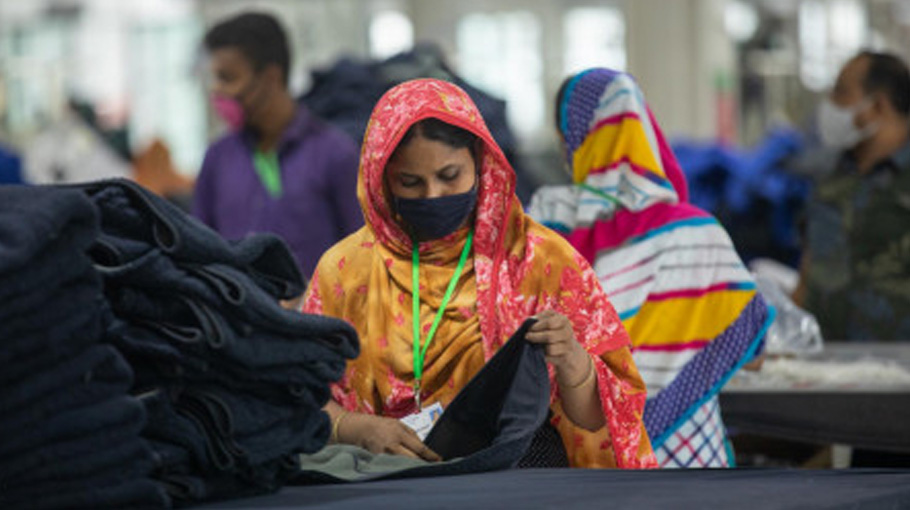Factors impacting Bangladesh’s positive pandemic recovery

Since gaining independence in 1971, Bangladesh has undergone a remarkable economic transformation, evolving from one of the world’s poorest nations to one of its fastest-growing economies. This growth story, marked by significant poverty reduction, began in the early 1990s with trade liberalisation and continued through the 2000s.
Despite the challenges of the COVID-19 pandemic in 2020, Bangladesh achieved a positive growth rate of 3.4 per cent, surpassing many developing countries. In late 2022, Bangladesh garnered international attention by joining Sri Lanka and Pakistan in seeking a loan from the International Monetary Fund (IMF) of approximately US$4.5 billion. While this pursuit of financial support may be a precautionary measure, the causes of Bangladesh’s current economic situation are deeply rooted in the economy’s inherent structure.
Such loans come with demanding conditions that can pose implementation challenges for recipient nations, including potential impacts to macroeconomic stability and tarnishing of the country’s image with external creditors. In a challenging environment, the IMF has acknowledged Bangladesh’s reform progress and commitment to decisive policy steps. The IMF has advised further monetary tightening, a neutral fiscal stance and increased currency flexibility to achieve short-term stability.
In 2023, Bangladesh has exhibited resilience and dynamism in its economic landscape amid global challenges. The country’s economy was projected to grow moderately, with GDP growth between 5.3 per cent and 6.0 per cent. This growth stems from a robust recovery from the COVID-19 pandemic, driven by prudent macroeconomic policy. But this recovery has not been without disruption — rising financial sector vulnerabilities, external pressures and global economic uncertainty have posed significant challenges.
A notable economic trend in Bangladesh in 2023 has been the significant role of its domestic market, characterised by a large consumer base and rapidly expanding middle and affluent classes. This demographic shift has increased domestic consumption and driven demand across various sectors, fuelling economic growth despite external uncertainties.
The digital revolution has been transformative, with widespread digital adoption catalysing advancements in finance, education and government services, contributing to economic resilience and inclusive growth. Despite this positive outlook, the country has faced energy shortages, balance-of-payments deficits and revenue shortfalls.
The textile and ready-made garments industry, driven by a young population and abundant natural resources, has been a major contributor to Bangladesh’s economic progress. But the lack of diversification in Bangladesh’s export basket is a significant challenge. The ready-made garments sector not only faces volatility in global demand but is also heavily reliant on human labour and is hindered by inadequate infrastructure.
Though the service sector complements garment manufacturing in the short term, it has also emerged as a viable long-term alternative to reduce dependence on the garment sector.
The World Bank projected per capita GDP growth in Bangladesh to be 4.1 per cent in 2023 — an indicator of the country’s solid financial health despite the challenges faced on the global front. But economic inequality has risen since the 1980s, with 1 per cent of the population holding 16.3 per cent of national income in 2021. The spectre of inflation looms large over the economy. With a forecasted inflation rate of 8.7–9.0 per cent in 2023, the rising cost of living has emerged as a central economic issue. This inflationary pressure is partially a by-product of global economic uncertainties, including the ongoing effects of the war in Ukraine.
The government’s revenue is falling short of meeting rising expenses in light of inflationary trends, exacerbating the country’s fiscal deficit. This fiscal deficit impacts the country’s trade balance, in turn depleting foreign currency reserves and perpetuating a cycle of inflationary pressure on the domestic economy.
Vulnerabilities in the financial sector, particularly in the capacity of banking systems to support import and export activities, add complexity to the economic environment. The ability of banks to open letters of credit and manage foreign currency transactions plays a critical role in maintaining the flow of trade amid a challenging international economic climate.
Bangladesh’s banking sector has experienced significant turmoil, exemplified by the largest private bank, Islami Bank, requiring financial assistance from the central bank to rebuild depositor trust in 2022. The instability stemmed from loan fraud perpetrated by influential business groups and individuals — a challenge faced by numerous other banks in the country. This banking crisis, coupled with capital flight, cronyism and bureaucratic corruption, is intricately tied to Bangladesh’s patronage politics.
As Bangladesh approaches its 2024 general elections, economic policy is at the forefront of political discourse. The nation faces significant economic challenges and the ongoing political crisis has been deemed ‘high risk’ for the fragile economy.
The country’s leaders and policymakers must navigate the balance-of-payments deficit while ensuring macroeconomic policies foster sustainable growth and development. While Bangladesh has navigated the tumultuous waters of the global economy with agility, 2023 has been marked by both promising growth and significant economic challenges.
Soumya Bhowmick is Associate Fellow at the Centre for New Economic Diplomacy, Observer Research Foundation.
Source: East Asia Forum




